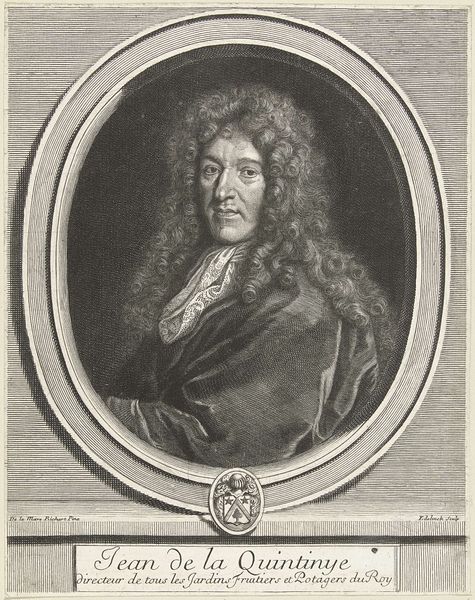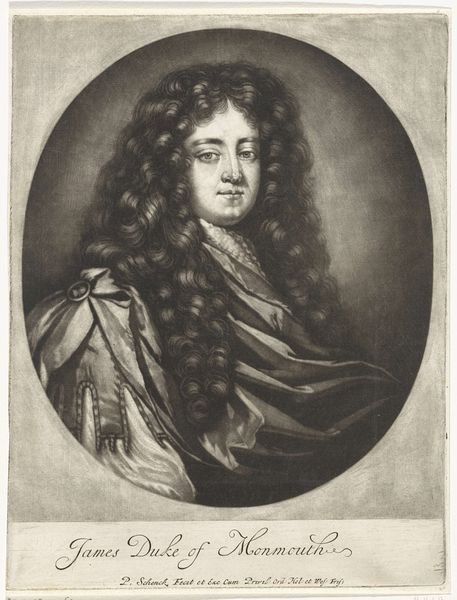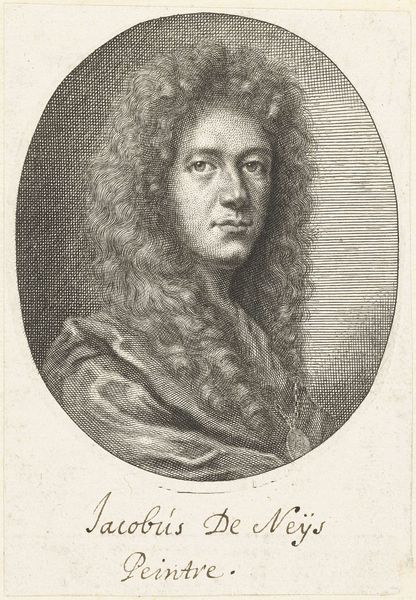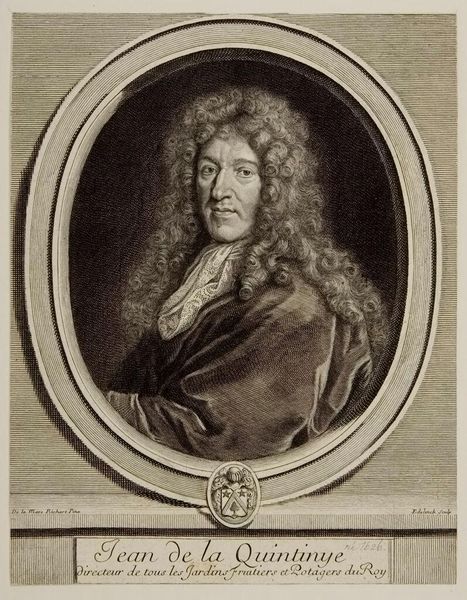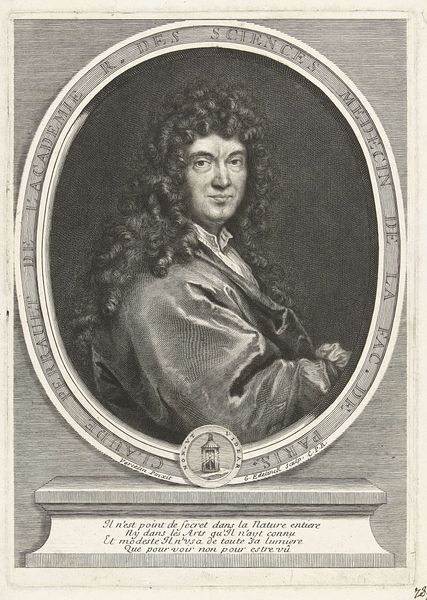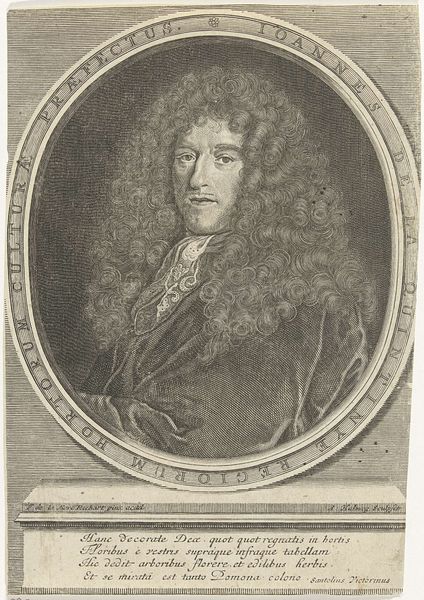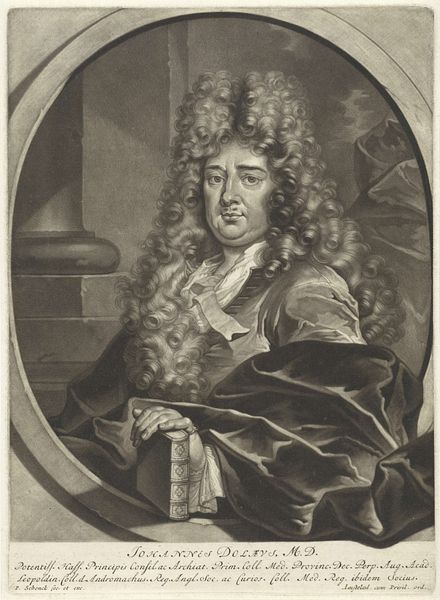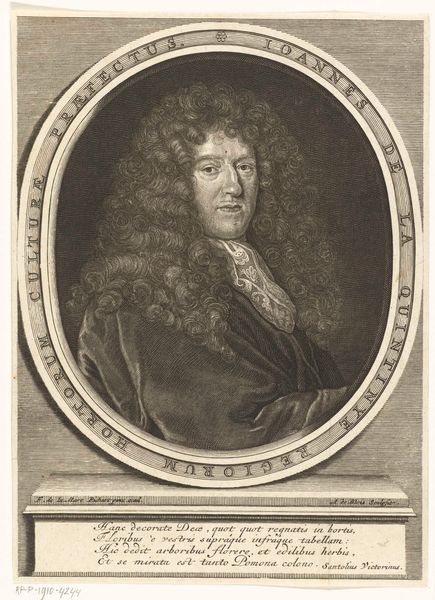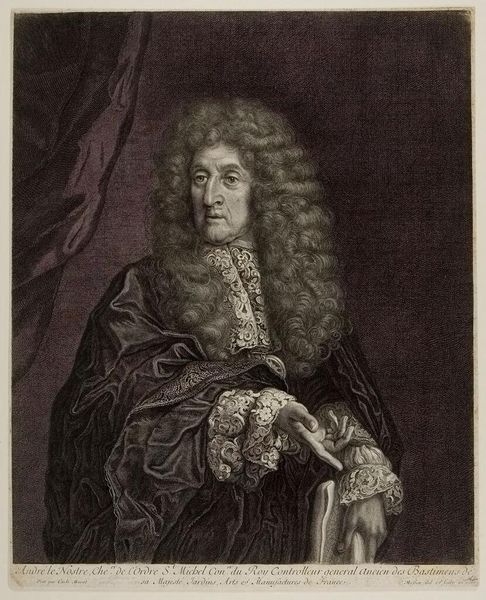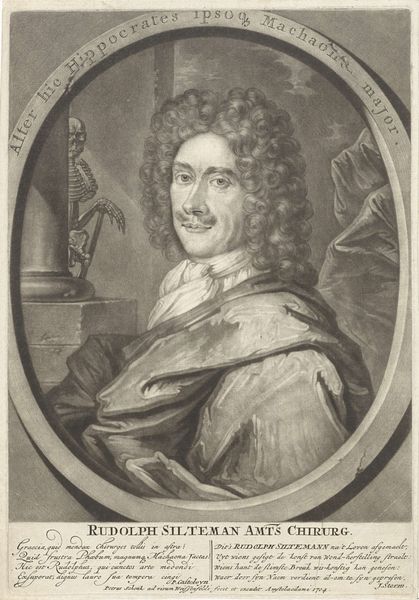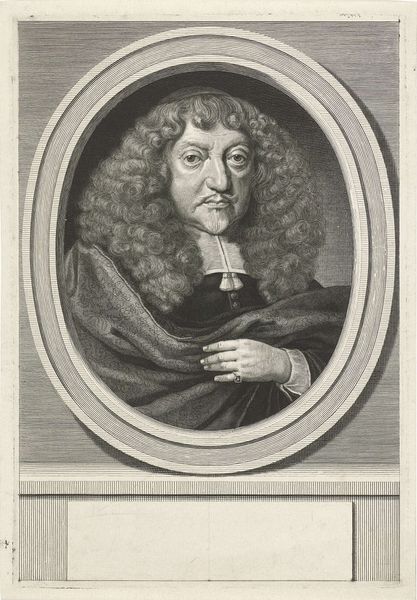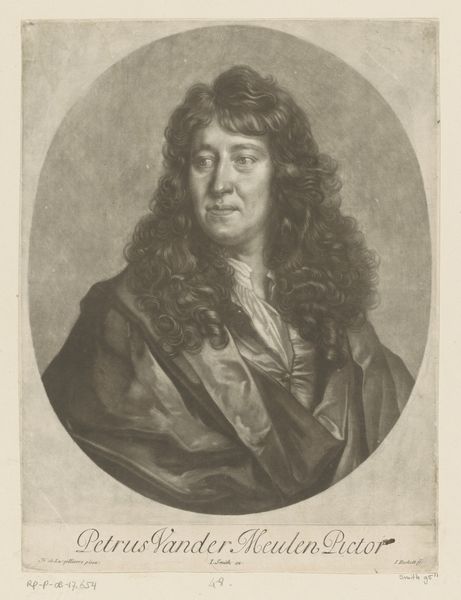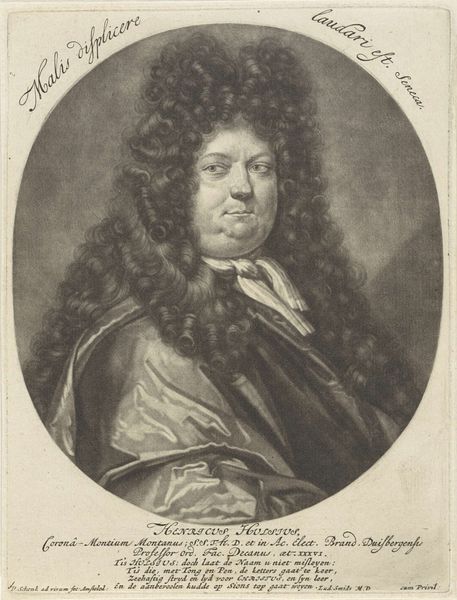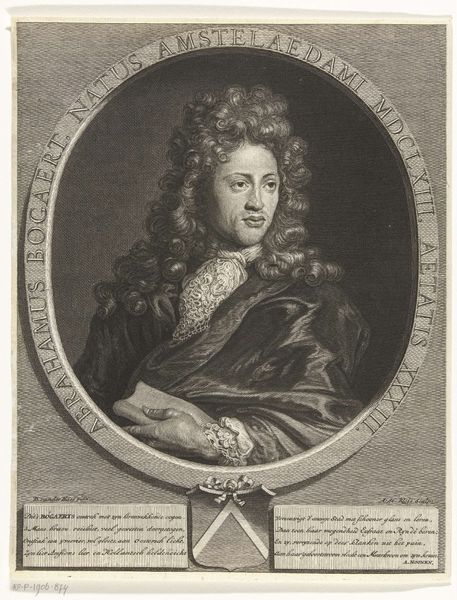
print, engraving
#
portrait
#
baroque
# print
#
engraving
Dimensions: height 357 mm, width 283 mm
Copyright: Rijks Museum: Open Domain
Editor: Here we have "Portret van Sir Peter Lely," made before 1669 by Arnold de Jode. It's an engraving, so a print, and it has this rather serious depiction of its subject, contrasted by an elaborate Baroque wig and soft landscape background. What strikes you about this work? Curator: Well, let's consider the means of production, here. Engraving, at this time, isn't just about making an image, it's about participating in a larger network of artistic and political power. Prints circulated widely. It makes me consider its place as reproducible commodity in the art market. How did its existence affect Lely's public image, and how was De Jode compensated for their labour in the process? Editor: That's a good point, I was definitely stuck on it as an isolated image of the sitter. Curator: Think also about the division of labor inherent in printmaking. You've got Peter Lely producing the design ("P. Lely delin." is printed there). Arnold de Jode executing the engraving. The text also mentions 'R. Thompson excud:' Who might that be and how did he affect the social context of the print's making? Consider that social and historical context. Who would buy this and why? What needs did the materials meet at the time? Editor: Perhaps it was a status symbol, an affordable way to own an image of someone important... or maybe it was commissioned for distribution? The making and marketing would influence that. Curator: Precisely! The engraving process itself allows for mass production, altering its function and meaning. How does that change our understanding of "Portraiture" in that era? It’s less about individual patronage and more about participating in visual culture. Editor: So by looking at the process of creating this engraving, it reveals the socio-economic implications, too? That's fascinating, I'd never considered how the print-making *materiality* impacted Baroque portraiture! Curator: Exactly. Considering the materials, process, and production can truly change your perception.
Comments
No comments
Be the first to comment and join the conversation on the ultimate creative platform.
